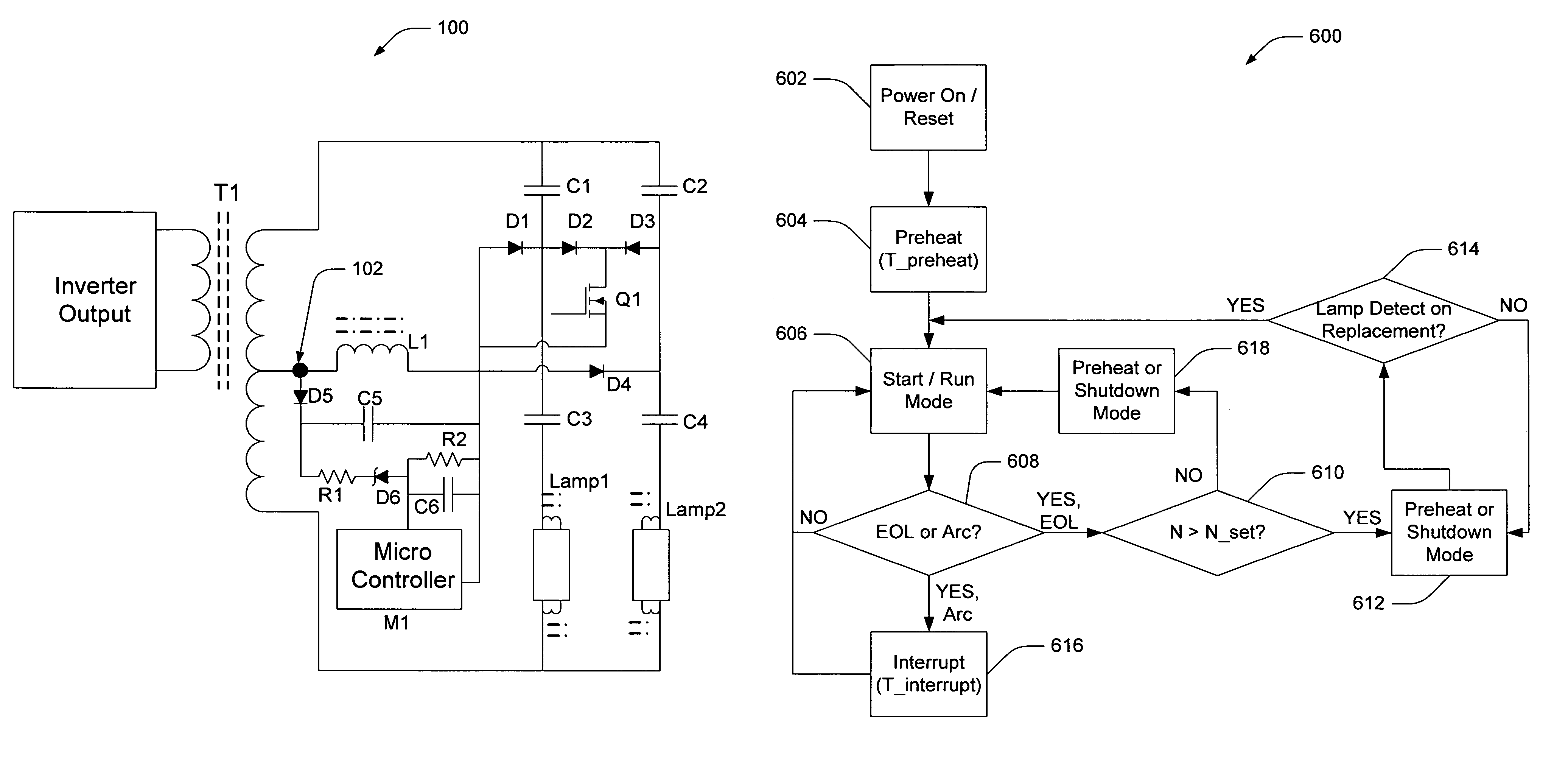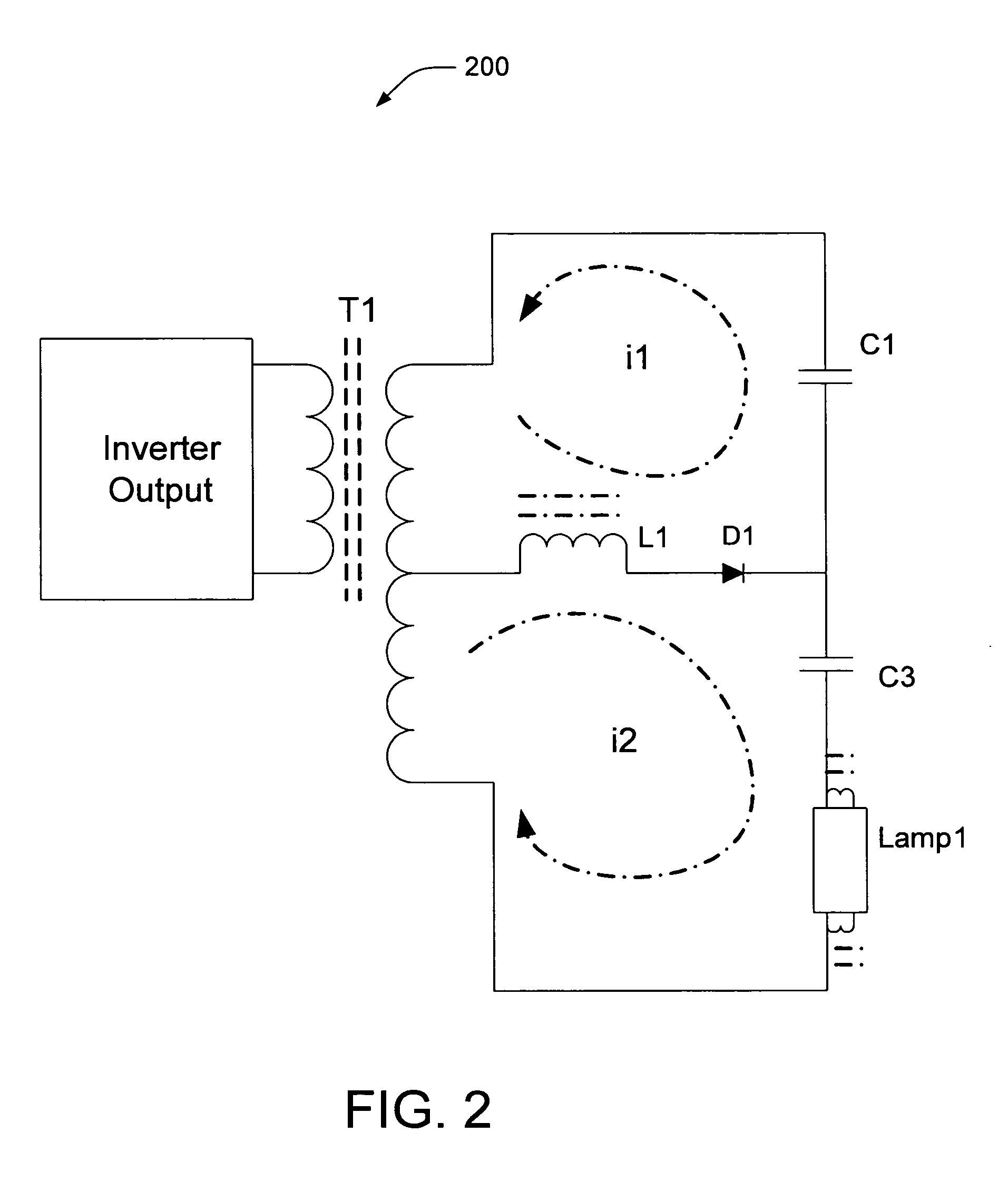Single point sensing for end of lamp life, anti-arcing, and no-load protection for electronic ballast
a technology of electronic ballast and end of lamp life, which is applied in the direction of instruments, process and machine control, and can solve the problems of lamp end caps and holders exceeding the design temperature limit, and affecting the safety and reliability of lighting systems. , to achieve the effect of convenient single-point sensing
- Summary
- Abstract
- Description
- Claims
- Application Information
AI Technical Summary
Benefits of technology
Problems solved by technology
Method used
Image
Examples
Embodiment Construction
[0012]Conventional ballasts implement lamps in series and senses lamp rectification by using either over-voltage (e.g., wherein the lamp increases voltage as the e-mix in the cathode depletes) or by sensing voltage developed on a DC blocking capacitor when the rectified current goes through it. If the measured voltage is outside of a window of predetermined minima and maxima, a protection circuit typically responds by shutting down the ballast.
[0013]However, there are many deficiencies associated with the over-voltage sensing approach. First, the ballast needs to be able to support multiple wattages and lamp lengths that operate at different voltages. Second, the problem becomes even more pronounced when two or more lamps operate in a series configuration. Ballasts designed with such a detecting method often do not work reliably and may cause malfunction, even when the lamp is in good condition. In some cases, a protection circuit may react by initiating a ballast starting sequence,...
PUM
 Login to View More
Login to View More Abstract
Description
Claims
Application Information
 Login to View More
Login to View More - R&D
- Intellectual Property
- Life Sciences
- Materials
- Tech Scout
- Unparalleled Data Quality
- Higher Quality Content
- 60% Fewer Hallucinations
Browse by: Latest US Patents, China's latest patents, Technical Efficacy Thesaurus, Application Domain, Technology Topic, Popular Technical Reports.
© 2025 PatSnap. All rights reserved.Legal|Privacy policy|Modern Slavery Act Transparency Statement|Sitemap|About US| Contact US: help@patsnap.com



